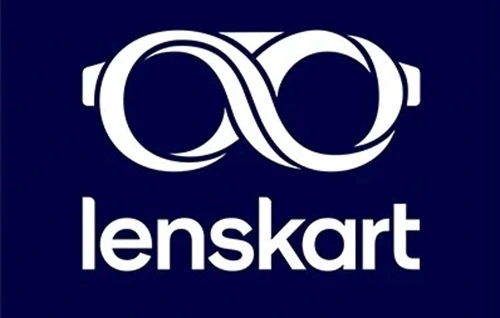Lenskart, founded in 2010 by Peyush Bansal, has revolutionized the eyewear industry in India by making stylish and affordable eyewear accessible to millions. Starting as an online platform, Lenskart quickly expanded into physical retail, creating an omnichannel presence that distinguishes it from competitors. With over 1,100 stores and a dominant online presence, Lenskart has established itself as a leader in India’s eyewear market, a segment previously dominated by unorganized players. This SWOT (Strengths, Weaknesses, Opportunities, Threats) analysis explores Lenskart’s current market position and provides insights into its future outlook in a rapidly changing retail and e-commerce landscape.

Strengths
1. Strong Brand Recognition and Market Leadership:
Lenskart has positioned itself as a top-of-mind brand in India’s eyewear market. Known for its fashionable frames, affordable pricing, and innovative approach, Lenskart enjoys strong brand recall and loyalty. By offering a wide variety of products catering to different demographics, Lenskart has built a large and loyal customer base, solidifying its leadership position in the Indian eyewear market.
2. Omnichannel Presence:
Lenskart’s unique omnichannel strategy, which combines a strong online presence with a growing network of physical stores, provides it with a competitive edge. Customers can choose to buy online or visit a store to try out frames, enhancing their shopping experience. This model also allows Lenskart to reach consumers in Tier 1, Tier 2, and even Tier 3 cities, maximizing convenience and customer reach.
3. In-House Manufacturing and Vertical Integration:
Lenskart has adopted a vertically integrated business model, with in-house manufacturing capabilities and direct distribution. By controlling the production process, Lenskart can manage costs, ensure product quality, and offer products at competitive prices. Vertical integration also allows the company to innovate with unique designs and technologies, such as its anti-glare, anti-blue light, and AI-powered virtual try-on features.
4. Strong Technology and Data-Driven Approach:
Lenskart leverages data analytics, artificial intelligence, and machine learning to personalize customer recommendations, manage inventory, and optimize pricing strategies. Its AI-driven virtual try-on feature and personalized style suggestions create an interactive shopping experience, catering to tech-savvy consumers. Lenskart’s digital innovation differentiates it from traditional eyewear retailers, making it particularly appealing to younger consumers.
Weaknesses
1. High Dependence on Urban Markets:
Despite its presence in semi-urban and smaller cities, Lenskart’s primary customer base is concentrated in urban areas, where disposable incomes are higher, and there is a greater acceptance of branded eyewear. This reliance on urban markets limits Lenskart’s reach, as rural markets remain largely untapped. Expanding into rural areas may require significant adaptation in terms of pricing and distribution, posing a challenge for Lenskart’s growth.
2. High Operational and Marketing Costs:
Lenskart’s omnichannel strategy, while effective, is also cost-intensive. Running both online and offline channels requires significant investment in retail spaces, logistics, and technology. Additionally, Lenskart spends heavily on marketing to maintain its brand visibility and attract new customers, especially as competition intensifies. These high operational and marketing expenses impact profitability and could strain financial resources in the long term.
3. Limited Product Diversification Beyond Eyewear:
Lenskart’s product range is largely limited to eyewear, including prescription glasses, sunglasses, and contact lenses. This narrow focus makes it reliant on the eyewear market’s growth. While Lenskart has introduced additional services, such as home eye check-ups, it faces the risk of market saturation and lacks diversification in other segments. Broadening its product or service range could provide additional revenue streams and mitigate this risk.
4. Customer Service and Return Policy Challenges:
Despite its success, Lenskart has faced customer complaints regarding after-sales service, return policies, and product quality. Eyewear purchases often require customization, which can lead to issues with fitting, prescription accuracy, and product returns. Enhancing customer service and ensuring seamless returns and exchanges are crucial for Lenskart’s reputation, especially as consumers today expect hassle-free shopping experiences.
Opportunities
1. Expanding into Tier 2 and Tier 3 Cities and Rural Markets:
India’s smaller cities and rural areas offer substantial growth potential, driven by rising incomes, increasing internet penetration, and growing awareness of eye health. By focusing on affordable eyewear and strengthening its distribution network in these regions, Lenskart can tap into a vast market. Expanding into Tier 2 and Tier 3 cities aligns well with the government’s push for increased accessibility and healthcare in underserved areas.
2. Growing Demand for Digital Health Services and Eye Care Awareness:
With increased screen time and awareness of eye health, demand for eye care services is on the rise. Lenskart can capitalize on this trend by expanding its eye-care services, such as online consultations, eye exams, and home eye check-ups. The brand’s existing expertise and digital infrastructure make it well-positioned to offer such services, helping it build long-term customer relationships and establish itself as a leader in digital eye care.
3. Global Expansion Opportunities:
Lenskart has already started expanding internationally, with a presence in countries like Singapore, the UAE, and the U.S. As a unique, vertically integrated eyewear brand, Lenskart has the potential to capture markets in other emerging economies and developed nations. By adapting its pricing and product offerings to local preferences, Lenskart can grow its brand internationally, which would diversify revenue and reduce dependency on the Indian market.
4. Product Diversification and Premium Offerings:
The eyewear market is evolving, with growing demand for niche products like blue-light-blocking lenses, smart glasses, and premium designer frames. Lenskart can diversify its offerings by introducing premium collections and exploring the development of tech-integrated eyewear. Diversifying into these high-margin products can enhance brand appeal, cater to different consumer segments, and increase profitability.
Threats
1. Intense Competition from Established and New Players:
The eyewear market in India and globally is highly competitive, with major players like Titan Eyeplus and international brands such as Ray-Ban competing for market share. E-commerce giants like Amazon and Flipkart have also entered the eyewear segment, while smaller, niche brands are gaining popularity. This intense competition pressures Lenskart to innovate and maintain competitive pricing, which can impact profitability.
2. Economic Slowdowns and Changes in Consumer Spending:
Lenskart operates in a discretionary spending category, which can be impacted by economic slowdowns. During periods of economic uncertainty or reduced consumer spending, eyewear purchases may decline as consumers prioritize essential goods. Although eyewear is a necessary product for many, consumers may delay purchases or opt for cheaper alternatives, affecting Lenskart’s revenue.
3. Cybersecurity and Data Privacy Risks:
As a tech-driven company, Lenskart relies heavily on online data to personalize customer experiences and manage operations. This dependence on digital infrastructure exposes it to cybersecurity risks, such as data breaches and cyberattacks. Any breach of customer data could harm Lenskart’s reputation, lead to regulatory penalties, and erode customer trust, impacting its brand value.
4. Dependence on Imported Raw Materials and Supply Chain Vulnerabilities:
Lenskart’s supply chain relies on imported raw materials and components, particularly from China, which exposes it to supply chain disruptions and geopolitical risks. Trade restrictions, tariffs, or disruptions in the supply chain due to unforeseen events, like the COVID-19 pandemic, could impact Lenskart’s ability to meet demand. These supply chain vulnerabilities can lead to delays, increased costs, and reduced product availability.
Future Outlook
The future outlook for Lenskart is promising, given the eyewear industry’s growth potential and the company’s strong market position. The Indian eyewear market is expected to grow steadily, driven by increased screen time, rising awareness of eye health, and expanding access to eyewear in rural and semi-urban regions. As the largest player in India’s organized eyewear market, Lenskart is well-positioned to benefit from these trends.
Expanding into Tier 2, Tier 3, and rural markets will be essential for Lenskart’s next phase of growth. By offering affordable eyewear and promoting eye health, Lenskart can attract new customers in underserved regions. Partnerships with government health programs could also enhance Lenskart’s reach and credibility in these areas.
Lenskart’s international expansion provides a unique growth avenue. Its successful entry into markets like Singapore and the UAE suggests that it has the potential to become a global player. By adapting its offerings to suit local markets and focusing on high-margin products, Lenskart can further diversify its revenue and strengthen its position in the global eyewear industry.
However, to sustain long-term growth, Lenskart must address certain weaknesses and external threats. Enhancing customer service, streamlining the return process, and improving after-sales support will be critical to retaining customers. Additionally, investing in cybersecurity and supply chain resilience is essential to safeguarding operations and protecting customer trust in a digital-first environment.
Lenskart’s ability to innovate in product offerings, such as introducing blue-light glasses and tech-integrated eyewear, can drive future growth. As consumer preferences evolve, Lenskart should explore premium products to capture different market segments and increase profitability. Leveraging its digital capabilities and data-driven approach, Lenskart can also deepen its understanding of customer preferences and optimize its offerings.
In conclusion, Lenskart’s strong brand, omnichannel model, and technology-driven approach provide a solid foundation for continued growth in India’s eyewear market. By addressing challenges, expanding its reach, and capitalizing on global opportunities, Lenskart can maintain its leadership in India while scaling internationally. With a strategic focus on customer experience, rural expansion, and product innovation, Lenskart is well-positioned to shape the future of eyewear retail in India and beyond.

